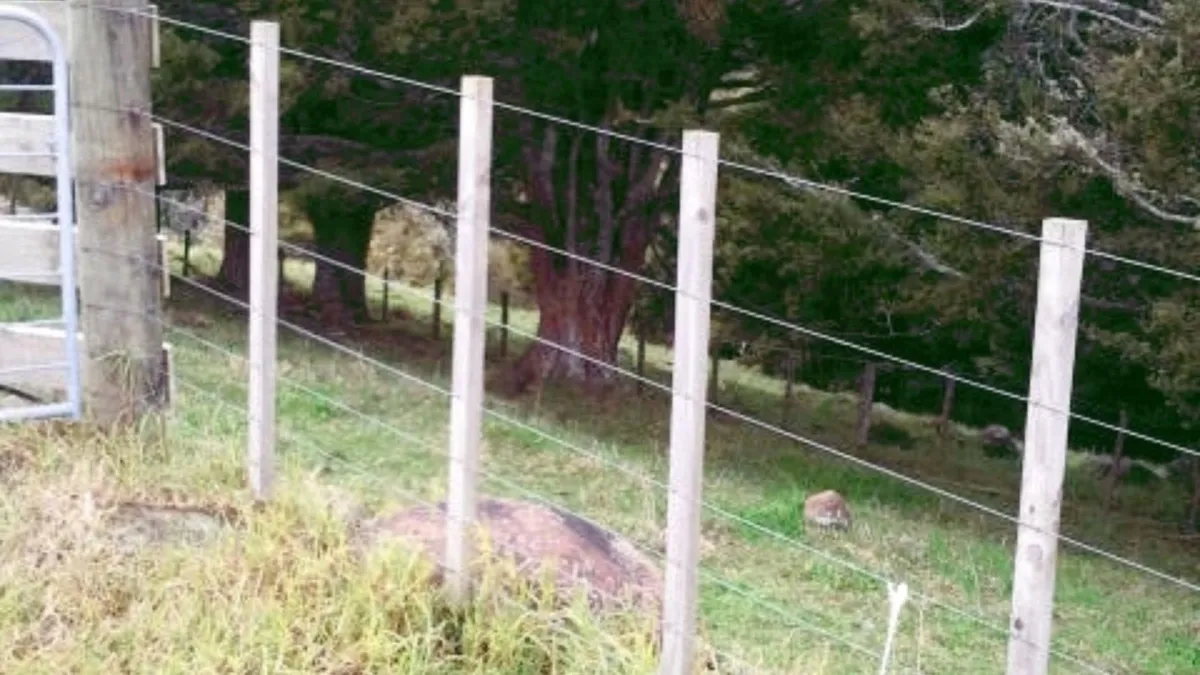
Fencing and the law
If you own or manage land in New Zealand, understanding your legal responsibilities under the Fencing Act 1978 is essential—especially when it comes to building or maintaining boundary fences. Whether you're on a lifestyle block or a working farm, the rules around rural fencing obligations affect how you share costs, maintain your fences, and resolve disputes with neighbours.
This guide explains the key provisions of the Act and outlines what counts as an adequate fence under New Zealand law.
What is the Fencing Act 1978?
The Fencing Act 1978 (originally the Fencing Act 1908) sets out the legal framework for boundary fencing between neighbouring properties. It was amended significantly in 1979 and again in related legislation, such as the Fencing of Swimming Pools Act 1987.
The Act applies to most property owners, including lifestyle farmers, and defines how costs are shared, how notice must be served, and what standards an “adequate fence” must meet.
What Counts as an Adequate Boundary Fence?
The Act includes detailed definitions of adequate rural fencing—this is the minimum standard if you're asking a neighbour to share costs.
7 or 8-Wire Post and Batten Fence
Wires: 7 or 8 galvanised wires, with 1–2 barbed wires permitted
Posts: Durable timber, concrete, or metal, max 5 m apart
Battens: At least 3 between posts
Wire size: 2.5 mm high-tensile or 4 mm standard
Height: Top wire at least 1 m above ground
Spacing: Bottom wire max 125 mm from ground; next 3 wires 125 mm apart
9 or 10-Wire Fence
As above, with 9 or 10 wires
Battens optional
Bottom 4 wires: no more than 130 mm apart
Bottom wire max 100 mm from ground
Prefabricated (Netting) Fence
Minimum height: 1 m
Netting: At least 7 horizontal wires, vertical wires no more than 305 mm apart
Additional wires: May include barbed wire
Posts: As above, max 5 m apart
Battens: Optional by agreement
Live Fences
A dense, well-maintained live fence (e.g. hedge or shelterbelt) can count as adequate by agreement.
Note: Fences may be modified if all parties agree. Modern 3 mm high-tensile wire is often used instead of the older No. 8 gauge.
For more detail on materials and construction methods, see our Fencing Glossary and the LSB Fencing Guide ebook.
Who Pays for a Boundary Fence?
By default, costs are shared 50/50 between neighbours.
If your neighbour refuses to contribute, you can serve a fencing notice under the Act.
The Fencing Notice Process
Serve a fencing notice outlining the proposed fence and costs.
Your neighbour has 21 days to respond with a cross-notice objecting or proposing changes.
If agreement isn’t reached, the dispute may proceed to the Disputes Tribunal or District Court.
Legal advice is strongly recommended if you're dealing with a reluctant or hostile neighbour.
Your Responsibilities as a Landowner
You must not build a fence that encroaches on your neighbour’s land.
If you damage a boundary fence, you are legally responsible for its repair or replacement.
Modifications must be agreed to in writing if they deviate from what the Act defines as adequate.
Summary: What Lifestyle Farmers Need to Know
Understand what counts as an ‘adequate’ fence if you're cost-sharing.
Serve a fencing notice if your neighbour won’t pay their share.
Avoid conflict by knowing your obligations—and theirs—under the Fencing Act 1978.
For complicated cases, seek legal advice early.
For more on building and maintaining fencing on a small farm, check out our Fencing category articles or get our Fencing Guide ebook, written specifically for lifestyle block owners.

